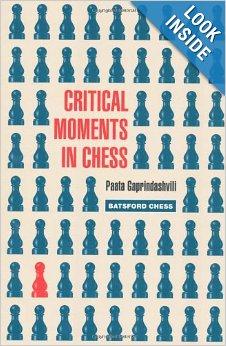
Critical Moment
Greetings Chess.com members!
Recently, I took an interest in "Critical Moments" and decided to do some research in this field. Paata Gaprindashvill's Critical Moments in Chess crisply defines the term. He describes critical moment as the stage where one needs to act quickly in a position or the opposition can equalize or even take initative. There are usually three critical moments in the game.
The Critical Moments
1.Struggle for initative
2.Development of the initative, creation of the attack
3.Delivery of the decisive blow
In this post, I will mainly focus on the first critical moment - struggle for initative through examples from the book.
Before I begin, here are some important motifs to identify how to gain the struggle for initative.
Initatives Motifs
1. Transfering pieces to strong active positions.
2.Changing the pawn structure.
3. Sacrificing a pawn for time.
4. Freeing pawn sacifrices.
5. Sacing the exchange for time.
6. Blow on blow.
Positional Puzzle
Analyze the position for a few minutes before attempting to solve it. Pretend this is a tournament situtation and you know this is the critical moment of the game.Try to implement some of the motifs above when considering the best move in the position. Remember, these are not tactic puzzles!
In this first diagram the position seems equal at first sight. Is there a move that will shift the evaulation?
Analyze this position a bit. Both sides castle opposite side. White is attacking on the king side while black is trying to attack on the queen side. We know that white is going to kick the knight with g5. What should black do in this position?
